UPSC Daily Current Affairs: 15 August 2024 | Current Affairs & Hindu Analysis: Daily, Weekly & Monthly PDF Download
GS1/Indian Society
Freedom from dependence, a new era in health care
Source: The Hindu

Why in News?
India's healthcare since globalization has improved greatly, and is globally recognized due to skilled professionals, effective policies, and strong institutions which draw patients from over 147 countries.
Economic implications of being a preferred Medical Destination:
- Foreign Exchange Savings:
- Saves billions in foreign exchange as fewer Indians need to travel abroad for advanced medical treatments.
- Revenue Generation:
- The influx of international patients generates over $9 billion annually, contributing to economic growth.
- Job Creation:
- The medical tourism sector creates employment opportunities in healthcare, hospitality, transportation, and pharmaceuticals.
- Cost-Effective Treatments:
- India's affordable yet high-quality medical services attract patients globally, further boosting the economy.
What are the challenges?
Shortage of Healthcare Professionals
- Current Shortage:
- India is estimated to be short of around 600,000 doctors, leading to a doctor-patient ratio of approximately 0.7 doctors per 1,000 people, significantly lower than the World Health Organization's recommended ratio of 1 doctor per 1,000 people.
- Future Demand:
- By 2030, the demand for healthcare professionals in India is expected to double, driven by an ageing population and the increasing burden of non-communicable diseases.
Inadequate Public Healthcare Spending
- Low Expenditure:
- As of 2021-22, India's public healthcare expenditure stood at 2.1% of GDP, lower than that of many developed countries. For instance, countries like Japan and France spend about 10% of their GDP on healthcare, while the United States spends 16.9%.
- Comparison with Neighbors:
- Even neighbouring countries like Bangladesh and Pakistan allocate over 3% of their GDP to public healthcare.
Unequal Access to Healthcare
- Urban-Rural Disparity:
- There is a stark disparity in healthcare access between urban and rural areas. Rural regions often lack basic healthcare facilities, leading to limited access to quality services for a significant portion of the population.
- Healthcare Infrastructure:
- India's healthcare infrastructure is inadequate to meet the growing demands of its population. For instance, India has one of the lowest per capita bed counts in the world, with only about 0.5 hospital beds per 1,000 people, compared to the OECD average of 4.7 beds per 1,000 people.
High Out-of-Pocket Expenditure
- Financial Burden:
- Approximately 75% of healthcare expenditure in India is borne out-of-pocket by individuals and families.
Need for a Strong Vision (Way forward)
- "Heal in India" Initiative:
- The Prime Minister's vision of emphasizes positioning India as a global healthcare leader. This initiative is not merely a slogan but a strategic approach to enhance India's reputation as a preferred medical destination.
- Youth Engagement:
- Inspiring the youth to pursue careers in healthcare is crucial for sustaining growth in this sector. By encouraging innovation and entrepreneurship among young Indians, the country can ensure a robust healthcare system.
- Investment in Public Healthcare:
- Increase public healthcare spending to improve infrastructure, especially in rural areas, and bridge the urban-rural disparity.
- Focus on Medical Device Manufacturing:
- Promote domestic production of medical devices under the "Make in India" initiative to reduce dependency on imports.
Mains PYQ:
Appropriate local community-level healthcare intervention is a prerequisite to achieve 'Health for All' in India. Explain. (UPSC IAS/2018)
GS3/Science and Technology
WHO declares Mpox as Public Health Emergency of International Concern
Source: WHO
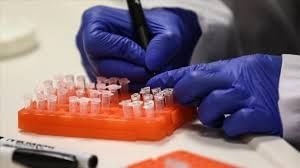
Why in news?
The World Health Organization (WHO) has declared mpox as a “public health emergency of international concern” (PHEIC).
What is a PHEIC?
- A PHEIC is a formal declaration by the WHO under the International Health Regulations (IHR), 2005.
- It refers to an “extraordinary event” posing a public health risk through the international spread of disease, potentially requiring a coordinated global response.
Criteria for PHEIC:
- Serious and unusual event: Poses a significant public health risk.
- Cross-border implications: Affects more than one country.
- International response needed: Requires immediate global coordination.
What is Mpox?
- Mpox is a disease caused by the orthopoxvirus, related to the smallpox virus.
- First detected in humans in 1970, it is endemic in central and West Africa.
Transmission:
- Spread from animals to humans (zoonotic) and between humans via close contact, respiratory droplets, or contaminated materials.
Symptoms:
- Fever, rash, swollen lymph nodes; can lead to severe complications or death.
Vaccination:
- WHO recommends vaccines, widely used in Nigeria and the Democratic Republic of the Congo (DRC) to control outbreaks.
Recent Developments:
- In recent years, there has been an increase in mpox cases, including the emergence of new strains such as clade 1b, which has spread to countries outside of its typical endemic regions.
- This led to the declaration of mpox as a Public Health Emergency of International Concern (PHEIC) due to its potential for widespread impact.
GS2/Governance
The Seductive Trap of the Civil Services
Source: The Hindu
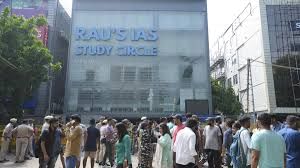
Why in news?
Public service doesn’t have exclusive rights to serve the nation, nor does it offer any special opportunities for doing so.
Present Status of Civil Services in India
- Reputation and Credibility: Recent controversies, such as the case of IAS probationer Puja Khedkar, who has allegedly misused quotas and provided false documentation shadow over the credibility of UPSC.
- High Aspirations and Struggles: The civil service job is a highly demandable career in India. It is often viewed as a prestigious and stable option which leads to a competitive environment where many aspirants repeatedly attempt the UPSC exams leading to mental health struggles and societal pressure.
- Coaching Industry Influence: The expansive coaching industry thrives on the aspirations of civil service candidates by capitalizing on the high failure rates and the desperation of aspirants.
About the Kothari Commission
- The Kothari Commission, officially known as the Education Commission of 1964-66, was established by the Government of India to comprehensively evaluate the educational system and recommend reforms.
- Key Recommendations:
- Age Limit Adjustments: The government should reduce the upper age limit for candidates from around 34-35 years to 25 years, with allowances for special categories which could help mitigate the prolonged pursuit of civil services and reduce the burden on young aspirants.
- Limiting Attempts: Restricting the number of attempts to three with an additional attempt for special categories could streamline the process and discourage the excessive commercialization of coaching services that exploit aspirants’ ambitions.
- Broadened Perspectives on Service: Encouraging young people to view various professions as valid forms of national service rather than solely focusing on government positions.
Way forward
- Reforming Recruitment and Training Processes: To enhance credibility and transparency in civil services recruitment, the UPSC and related bodies could implement stricter verification processes for candidates’ credentials, including quotas and documentation.
- Diversifying Career Awareness and Opportunities: The government, along with educational institutions like CBSE, can promote awareness of diverse career paths beyond civil services, emphasizing the value of contributing to the nation through various professions.
Main PYQ
Initially Civil Services in India were designed to achieve the goals of neutrality and effectiveness, which seems to be lacking in the present context. Do you agree with the view that drastic reforms are required in Civil Services. Comment (UPSC IAS/2017)
GS3/Enviro & Biodiversity
3 more Ramsar Wetland sites now in India, taking total to 85
Source: The Hindu
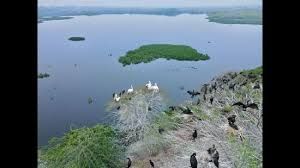
Why in News?
The Environment Ministry announced the designation of three more wetlands: Nanjarayan Bird Sanctuary (TN), Kazhuveli Bird Sanctuary (TN) and Tawa Reservoir (MP) as Ramsar Sites. This makes the total Ramsar sites count in India to 85.
About the newly designated Ramsar Sites:1.
Location
- Tiruppur District, Tamil Nadu: Located on the banks of Nanjarayan Tank.
- Villupuram District, Tamil Nadu: Brackish water wetland near Bay of Bengal.
- Hoshangabad District, Madhya Pradesh: Part of Narmada River Basin, foothills of Satpura Range.
Geographical Features
- Tiruppur District, Tamil Nadu: ~125 hectares.
- Villupuram District, Tamil Nadu: ~5,000 hectares.
- Hoshangabad District, Madhya Pradesh: ~225 sq. km.
Key Species
- Tiruppur District, Tamil Nadu: Herons, egrets, pelicans.
- Villupuram District, Tamil Nadu: Flamingos, pelicans, storks, waterfowl.
- Hoshangabad District, Madhya Pradesh: Mahseer fish.
Ecosystem
- Tiruppur District, Tamil Nadu: Wetland habitats, surrounded by agricultural lands.
- Villupuram District, Tamil Nadu: Mix of freshwater and saltwater habitats, includes mangroves.
- Hoshangabad District, Madhya Pradesh: Aquatic life, forested surroundings.
GS3/Science and Technology
Extremophile bacteria have learnt to survive microwaves
Source: The Hindu

Why in news?
Researchers have isolated extremophile bacteria from harsh environments like volcanic vents, permafrost, acid mines, deep-sea hydrothermal vents, and lakes beneath polar ice caps.
What are Extremophiles?
- Extremophiles are tiny living things that survive in really harsh places where most other living things can't live.
- Examples include places like volcanic vents, frozen ground that never thaws, acidic mines, deep-sea vents that shoot out hot water, dark lakes under ice caps at the poles, the outsides of spaceships, and areas around where nuclear waste is stored.
Adaptation and Evolution
- Extremophiles have developed unique biological and biochemical processes over millions of years to adapt to diverse habitats.
- Unlike more complex life forms, which have one set of proteins, extremophiles have multiple sets of proteins, each adapted to specific environmental conditions.
- These proteins are 'activated' based on the surrounding environment, enabling survival during extreme conditions like high temperatures, lack of water, or high acidity.
Significance
- Some scientists believe that life on Earth may have begun as an extremophile in extreme environmental niches before spreading and adapting to more temperate ecosystems.
About the 'Earth Microbiome Project'
- It is a global initiative aimed at mapping, organizing, and understanding diversity of microbial life across different environmental niches on Earth.
- The project was founded in 2010.
Objective
- To sequence 200,000 genetic samples from diverse environments.
- To assemble 500,000 microbial genomes, creating a comprehensive map of microbial diversity on Earth.
- The project is part of broader efforts to understand the microbial world, which is still in its infancy.
Related Projects
- Understanding microbial diversity has numerous biological and industrial applications, such as developing new enzymes for molecular biology or finding new ways to adapt organisms to challenging environments.
GS3/Science and Technology
What is the drug Captagon?
Source: Indian Express
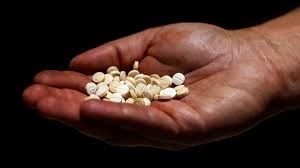
Why in news?
Captagon, the “poor man’s cocaine,” has become increasingly popular among young adults in the Middle East and North Africa.
What is the Drug Captagon?
- Captagon is a synthetic drug that was originally developed in Germany in the 1960s and 1970s.
- It was initially created as a pharmaceutical treatment for attention deficit disorders, narcolepsy, and sometimes depression.
- The primary active ingredient in Captagon is fenethylline, a compound that, once ingested, is metabolized into two powerful stimulants: amphetamine and theophylline.
- These substances stimulate the central nervous system, leading to increased alertness, reduced fatigue, and a sense of euphoria.
How Addictive is Captagon?
- Captagon is highly addictive due to its powerful effects on the brain and body.
- As a psychostimulant, Captagon significantly impacts the central nervous system, leading to a range of effects that can make it very difficult for users to stop taking the drug once they start.
- It is also reportedly used by fighters in conflict zones to enhance their endurance and suppress fatigue.
The primary effects of Captagon include:
- Euphoria: Users often experience an intense feeling of happiness or well-being.
- Increased Wakefulness: The drug reduces the need for sleep, keeping users awake and alert for extended periods.
- Enhanced Physical and Mental Performance: Users may feel stronger, more focused, and more capable of performing both physically and mentally demanding tasks.
GS2/International Relations
India, UAE reviewing precious metals trade under CEPA
Source: Financial Express

Why in news?
India is seeking a review of certain provisions of the free trade agreement (FTA) with the UAE, which came into force on May 1, 2022.
India-UAE Trade Relations: An Overview
- India is the 3rd largest trading partner of the UAE, with bilateral trade amounting to USD 83.65 billion in 2023-24.
- The Comprehensive Economic Partnership Agreement between India and the UAE covers various aspects, including value addition norms and customs duty reduction.
Concerns over Precious Metals Imports
- There has been a significant increase in imports of precious metals from the UAE under the trade agreement.
- The Global Trade Research Initiative (GTRI) has raised concerns about the spurt in imports of gold, silver, platinum, and diamonds with zero tariffs in the coming years.
- GTRI's report highlights potential revenue losses and a shift in import business from banks to private traders, favoring Dubai-based firms.
- It also claims that many imports do not meet the Rules of Origin conditions, making them ineligible for concessions.
Review of IT Hardware Import Regime
- When asked about the review of the new authorization regime for monitoring imports of certain IT hardware products, Barthwal indicated that the government would make a decision at the appropriate time.
- The government had previously adjusted import restrictions on laptops and computers, allowing importers to bring in shipments under an 'authorization' system until September.
GS2/Polity and Governance
Amrit Bharat Station Scheme
Source: Times of India
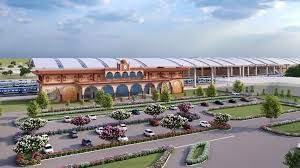
Why in News?
Western Railway has announced the inclusion of Kandivali and Dahisar railway stations in the recently launched Amrit Bharat Station Scheme (ABSS).
About Amrit Bharat Station Scheme:
- An ongoing initiative by the Ministry of Railways in India started in February 2023 to revamp railway stations throughout the country.
- Aims to enhance railway stations with a focus on long-term growth.
- Involves crafting master plans and executing them gradually to enhance various station facilities.
- Takes into consideration the specific requirements of each station to promote a comprehensive approach to station improvement.
- Goal is to modernize railway stations into well-equipped centers with better passenger services, improved traffic flow, integrated transportation modes, and enhanced signage.
- Includes adding new facilities, as well as upgrading and replacing existing ones.
- Ultimate aim is to evolve these stations into lively urban hubs in the future.
- Modern passenger amenities: Involves providing clean waiting areas, restrooms, facilities for the disabled, and food outlets.
- Improved traffic circulation: Focuses on creating separate entry and exit points, wider pathways, and sufficient parking.
- Inter-modal integration: Aims at seamless connectivity between railway stations and other transport modes like buses and taxis.
- Upgraded signage: Includes clear signage in multiple languages for passenger guidance.
- Sustainability: Uses energy-efficient lighting and appliances.
- Eco-friendliness:
- Rainwater harvesting systems and green spaces.
- Ballastless tracks to reduce noise and vibrations.
- Roof plazas for extra space for commercial activities and passenger amenities.
|
61 videos|5403 docs|1144 tests
|
FAQs on UPSC Daily Current Affairs: 15 August 2024 - Current Affairs & Hindu Analysis: Daily, Weekly & Monthly
| 1. What is a PHEIC? |  |
| 2. What is Mpox? |  |
| 3. What is the present status of Civil Services in India? |  |
| 4. What is the Kothari Commission? |  |
| 5. How many Ramsar Wetland sites are now in India, and what is their significance? |  |





















